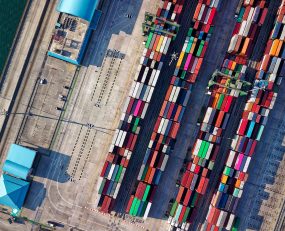
Ocean freight rates have continued their free fall from record highs from last year, when the pandemic disrupted manufacturing and the shipping of goods, especially from China, amidst high global demand.
The data indicates a muted peak season with a downward shift in freight rate levels and demand in key import destinations was starting to slow.
The current rate is still roughly double what it was before the pandemic started, with Asia Pacific to the US West Coast rates at 101% vs 2019. However, rates for containers originating from the Far East are as much as 80% down from April this year when congestion at Shanghai’s ports caused by a citywide lockdown slowed the world’s supply chain.
There are various factors pushing rates down currently, notably, high inventory rates due to retailers overcompensating in order numbers in light of previous delays and shortages. Paired with the market’s response of induced demand, where carriers have increased capacity on the trans-pacific lane, the situation all but assures a down-ward spiral for rates.
In contrast, Trans-Atlantic lanes have stayed fairly level due to congestion on the US East Coast, as volumes and handling demand shifts away from the West Coast. We observed a 15% drop in rates in April similarly due to Carriers adding capacity to this lane.
While the global outlook remains gloomy, and inflation reduces demand from consumers and business alike, it should be noted that volumes are levelling off rather than dropping, which should indicate that demand remains strong.
Overall, after months of declining rates, the decline is not as sharp as the initial fall. According to FBX, China-East Coast index has been unchanged since Oct. 18 and down only 5% from Oct 6. While this could be a temporary plateau before the next fall, it could also spell the end of this episode, to float our new post-pandemic normal for ocean freight rates.